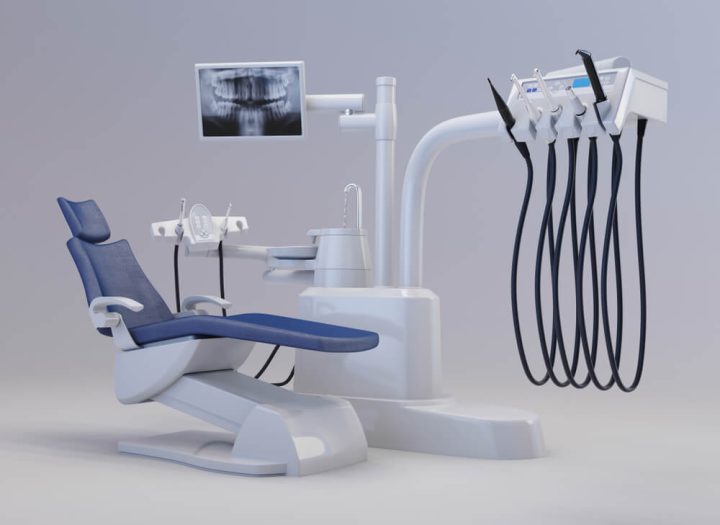Why Rapid Prototyping Speeds Up Product Success
Bringing a new product to market can be an exciting yet complex process. Traditional development cycles can be slow and costly, and are often riddled with risks, which can leave many promising ideas stuck in limbo.
This is where rapid prototyping comes in: a development approach that accelerates innovation, reduces costs and increases the likelihood of product success. By swiftly transforming ideas into tangible prototypes, businesses can validate, refine and launch products more quickly than ever before.
What is Rapid Prototyping?
Rapid prototyping involves creating quick, iterative models of a product in order to test and improve its design, usability and functionality. Unlike traditional product development, which often involves long design cycles and significant initial investment, rapid prototyping emphasises speed, flexibility and learning through trial and error.
Thanks to technologies such as 3D printing, digital simulations and computer-aided design (CAD), it is now possible to produce prototypes in days rather than months. The purpose of these models is to provide a tangible representation of the idea, allowing teams to test assumptions and gather feedback early in the development process, so they don’t need to be perfect.
Why Speed Matters in Product Development
In a competitive marketplace, time to market can be the difference between success and failure for a product. Consumers have more choice than ever before, and industries are evolving at lightning speed. If a company waits too long to release its solution, it risks being overtaken by competitors that are quicker to market.
Rapid prototyping significantly shortens the development timeline. Rather than spending months designing on paper, businesses can swiftly create prototypes and put them into the hands of potential users.
They can then learn from their reactions and adapt accordingly. This accelerates decision-making and ensures that the final product is better aligned with customer needs. Companies that adopt this approach often gain a first-mover advantage, establishing themselves as innovators while their competitors are still in the development phase.
The Benefits of Rapid Prototyping
Faster Validation of Ideas
One of the greatest strengths of rapid prototyping is the ability to test concepts quickly. Instead of committing to full-scale production, teams can validate ideas with low-cost models. This allows them to see how customers interact with the product, identify potential flaws, and refine the design before significant resources are spent.
Reduced Development Costs
Mistakes in traditional development cycles can be costly. However, by identifying problems early on, rapid prototyping can help businesses avoid costly redesigns and wasted investment. Creating multiple prototypes enables teams to perfect the product step by step, streamlining the development process and keeping costs down.
Encouraging Innovation
When teams know that they can quickly test and discard ideas, they are more likely to experiment. This culture of innovation often results in breakthrough solutions. Since prototypes are inexpensive and easy to produce, creativity can flourish without fear of wasting resources.
Improved Communication Across Teams
Prototypes provide designers, engineers, stakeholders and customers with a shared reference point. Rather than relying on abstract drawings or lengthy descriptions, they allow everyone to interact with a physical or digital model. This clarity reduces misunderstandings, aligns expectations and accelerates collaboration.
How Rapid Prototyping Fits into the Product Lifecycle
Rapid prototyping isn’t just useful in the early stages of product development; it supports the entire lifecycle. At the concept stage, for example, it enables teams to test feasibility and gauge customer interest. During the development stage, prototypes help to refine the minimum viable product (MVP) and ensure usability.
As the product moves closer to manufacturing, prototypes confirm technical specifications and quality standards. Even after launch, rapid prototyping can facilitate continuous improvement by enabling the testing of updates, accessories or design enhancements without disrupting production.
Challenges and Considerations
Although rapid prototyping offers many advantages, it does present some challenges. By their very nature, prototypes are imperfect. They may not accurately reflect the durability, performance or appearance of the final product. If stakeholders mistake prototypes for finished designs, relying too heavily on them can create unrealistic expectations.
It is also essential to strike the right balance between speed and accuracy. If a prototype is rushed, it may not adequately represent the intended features and provide misleading feedback. Successful rapid prototyping therefore requires clear goals, disciplined iteration and careful management of stakeholder expectations.
Final thoughts
In today’s fast-paced business environment, the ability to innovate quickly is a significant competitive advantage. Rapid prototyping enables companies to validate ideas, cut development costs, stimulate creativity and bring products to market more quickly. Integrating this approach into the product lifecycle enables businesses to minimise risk and position themselves for long-term success.
Companies that embrace rapid prototyping are most likely to stay ahead of their competitors, capture customer attention and turn great ideas into profitable realities. For entrepreneurs and established businesses alike, rapid prototyping is not just a tool; it is a pathway to faster, smarter, and more successful product development.
Ready to create your next project?
Find out how we – a product design company, based in Cambridge (UK) – can help you with your next product design project. Contact us on 01223 662300.




